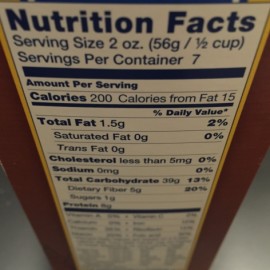Nutrition is not a 1 to 1 equation in which certain decisions are always bad and others are always good; it’s a balancing act that involves trade-offs.
The Low Fat Vs. Full Fat Equation
The good example is full fat versus low fat foods. Which is better? Consider this:
1) Low fat products are often higher in sugar and that sugar is more rapidly absorbed by the body. This is not good for your metabolism and is suspected to play a role in weight gain and the development of Type II diabetes. On the other hand, low fat foods can be lower in calories and controlling calories can help you lose weight.
2) Full fat foods are often lower in sugar and the sugar that is present is more slowly absorbed.* This helps regulate glucose spikes and insulin spikes. On the other hand, these foods are usually higher in calories so they can lead to weight gain.
Balancing the Diet Equation
The take-away is that the constant search for the “right” diet is an illusion. Foods are not all good or all bad. Instead, they have a variety of qualities in different combinations.
Here is one example. Nuts have lots of healthy fats that do very good things for your blood chemistry. They are also caloric, meaning excess can lead to weight gain.
Handful of nuts = good fats, promotes healthy blood chemistry
vs.
Binging on nuts = lots of calories, potential weight gain
So in short, nuts are a great snack with some protein and lots of healthy fats, but overdoing it can be a problem for wieght management.
Conclusion
A balanced diet, a healthy diet, whatever you want to call it, is one that considers and honors the complexity of food. If that sounds daunting, there are guidelines that can help simplify the process. However, do not misinterpret simplifying tools with simplyfied nutrition.
RELATED:
Diet Science: Don’t Get Buried
Again, It’s Not About The Weight
* Beware of high fat and high sugar foods, like doughnuts. This is a whole different ball game and one that you don’t want to play.
